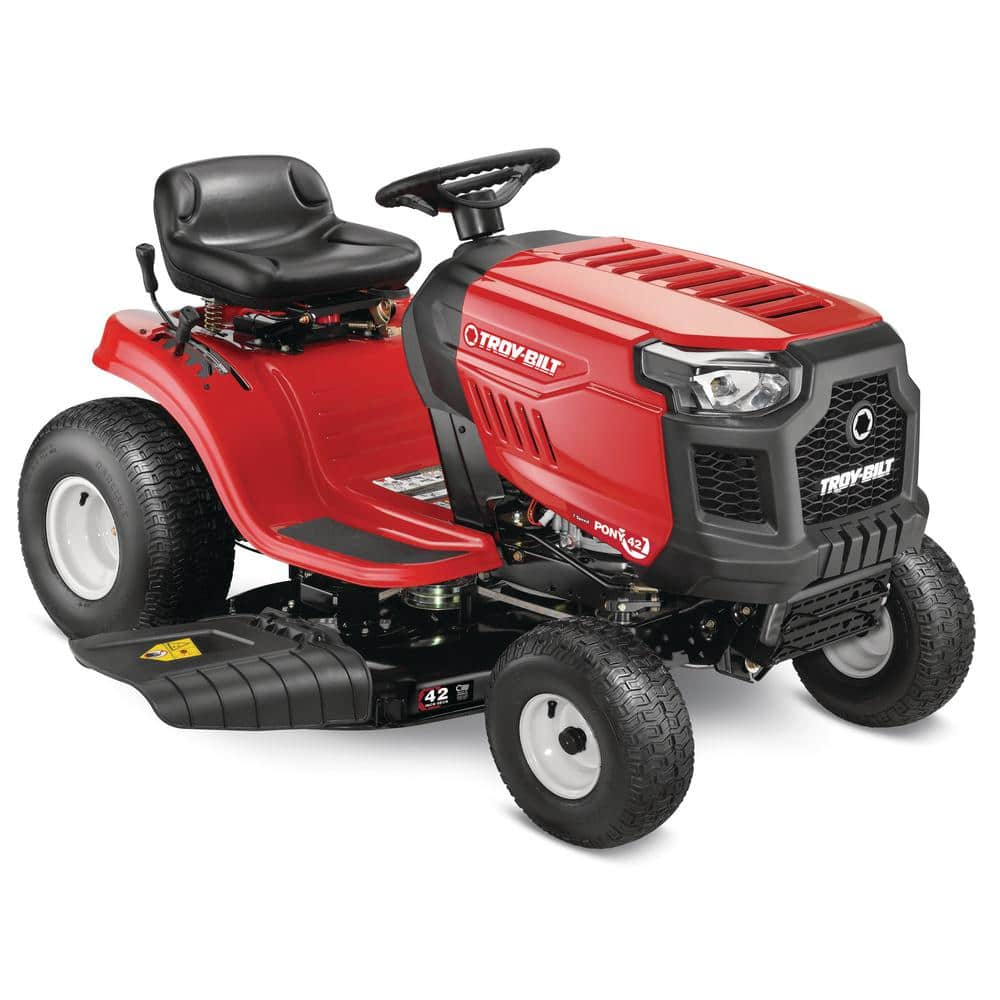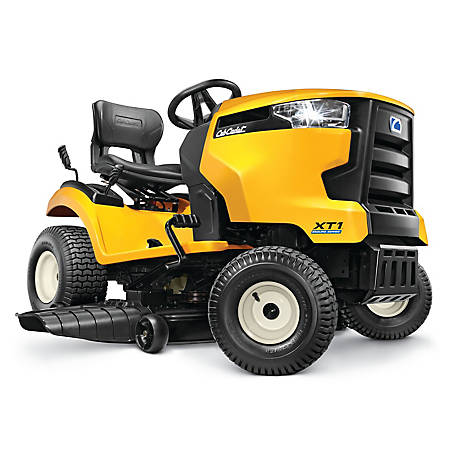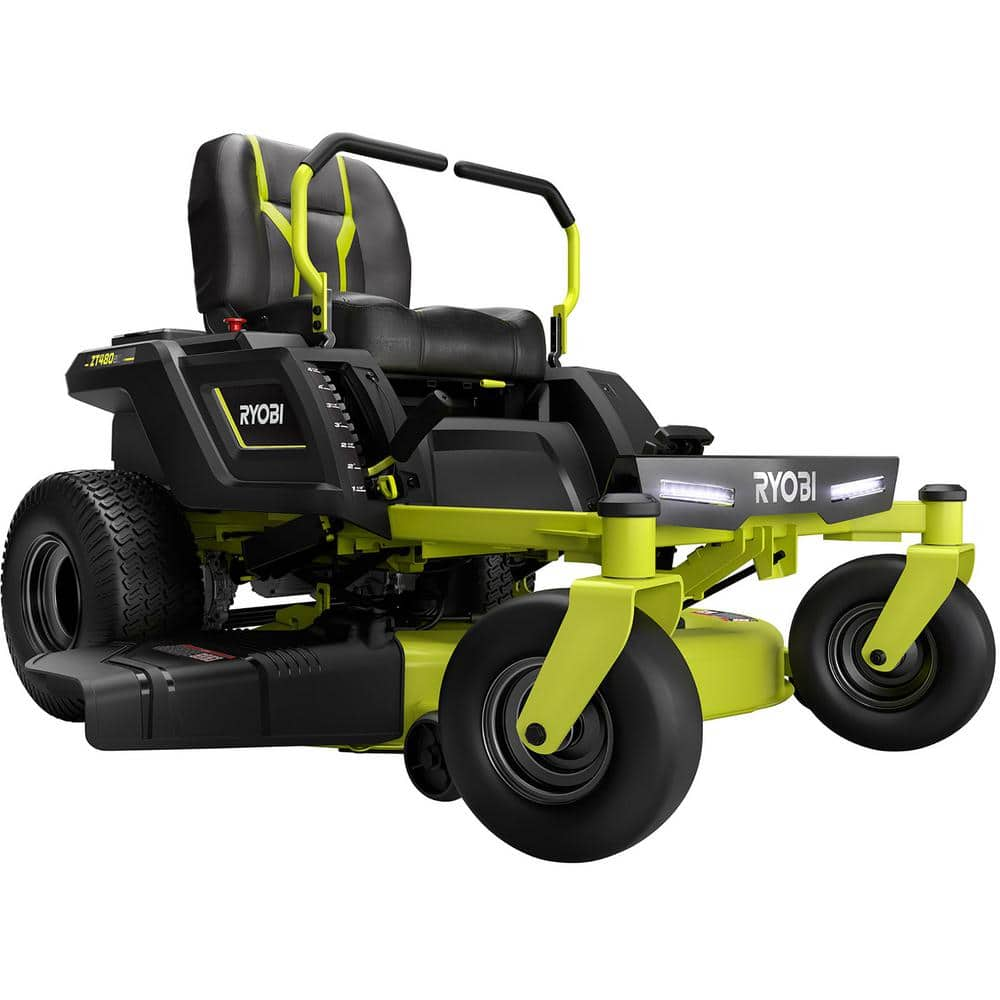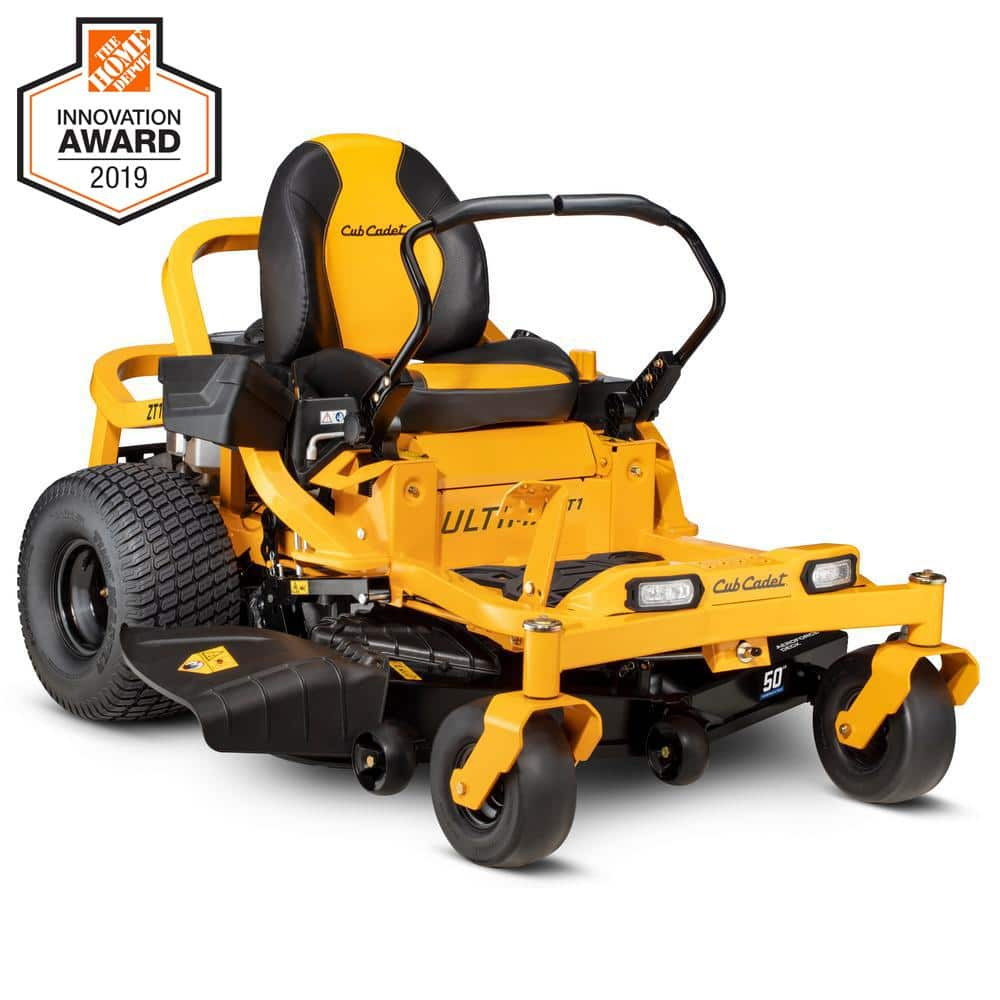Troy-Bilt Pony 42 in. 15.5 HP Briggs and Stratton 7-Speed Manual Drive Gas Riding Lawn Tractor
15.5 HP 500cc single cylinder Briggs and Stratton engine. 7-speed Shift-on-the-Go transmission for easy speed adjustment. 42 in. twin blade cutting deck for lawns up to 2 acres.
Get solid, strong performance and plenty of power with the Troy-Bilt Pony 42 riding lawn tractor. The Pony lawn tractor is powered by a 15.5 HP Power Built Series (single-cylinder) OHV Briggs and Stratton engine that delivers reliable starting performance for all your mowing needs. The 7-speed Shift-on-the-Go transmission allows smooth change of speed and direction while the operator-controlled reverse mowing feature provides an alternate cutting option when you need it. Operators can easily get on and off the mower with the StepThru frame design made of fully-welded, 13-Gauge steel. Automatic headlights provide increased visibility and added safety at any time of day or night.
- 15.5 HP 500 cc power built series single-cylinder OHV Briggs & Stratton engine delivers reliability and convenience combined like never before, these engines deliver easy starting and superior performance
- 7-speed shift-on-the-go transmission for smooth change of speed and direction and operator-controlled reverse mowing
- 42 in. twin-blade, side discharge deck cuts quickly and cleanly, 5-position deck height adjustment
- 13-Gauge fully-welded step-thru frame with cup holder is easy to get on and off
- 18 in. turn radius allows you to mow in tighter spaces and navigate around obstacles, trim close to trees and other landscaping features in confidence
- Comfortable low-back seat
- Increased visibility with automatic headlights
- Bagging capability allows you to collect grass clippings and the mulching capability allows you to return nutrients to the soil for a healthier lawn (rear bagger and mulch kit sold separately)
- Optional accessories include baggers, mulch kits, carts and many other attachments (sold separately)
- 2-year limited warranty
- Troy-Bilt Pony 42 comes fully crated and requires some assembly upon arrival
-
Additional information
| Assembled Depth x Height x Width (in.) | 70 x 35.5 x 47 |
|---|---|
| Cutting Width (in.) | 42 |
| Front Wheel Size (in.) | 15 |
| Mower Deck Width (in.) | 42 |
| Rear Wheel Size (in.) | 20 |
| Turning Radius (in.) | 18 |
| Certifications and Listings | No Certifications or Listings |
| Manufacturer Warranty | 2-Year Limited Warranty |






by John
This was my first lawn mower, was a bit disappointed while moving the mower out of the crate, it was difficult and took very long time. As a first time buyer, I was skeptical about the reviews which mentioned about “no gas pedal”, “sudden movements”, “uneven grass cuts”. But when I first used it changed the throttle as needed with lower speed selection and did see any of those problems. Without the gas pedal it was so easy to maneuver and use it on uneven surfaces including hilly terrain. I did not buy the bagger, but having it would really help clean up the lawn I only wish I had the coupons to get some discount overall, but so happy with the performance
by Charles
I haven’t had it long enough for a proper review. Easy to start, lots of power (more then I’ll need),good turning radius. The problem I had wasn’t with the mower, it was with the delivery. The delivery company wasn’t the problem in fact I give them 5 stars. My issue was the packaging, the mower came in a flimsy crate which sat on a smaller pallet. Had a hard time getting the mower off the pallet after removing the crate.
by Ashley
Very good machine easy to assemble.
by Daniel
The mower works fine but the price was a bit much.
by William
Overall good but what I don’t like about the lawn tractor is that you have to disingage the cutting blades to back up or the Engine will stall.
by Tarpman
Needs anti-scalp wheels on the mower deck. Other wise, it’s a good little mower.